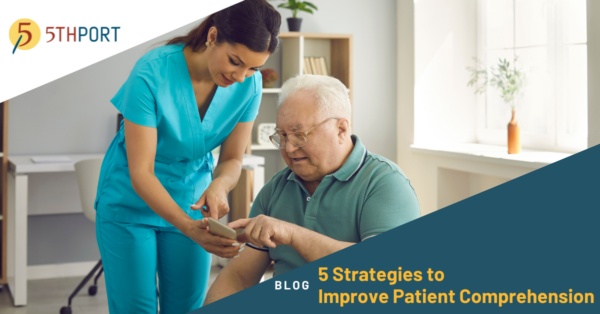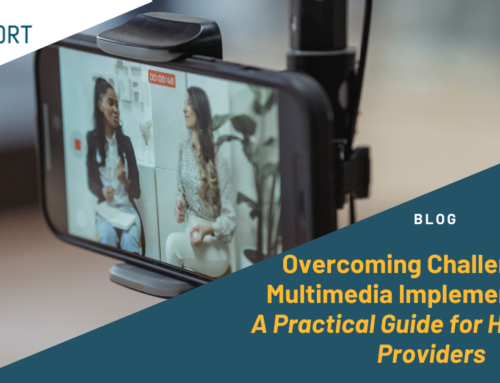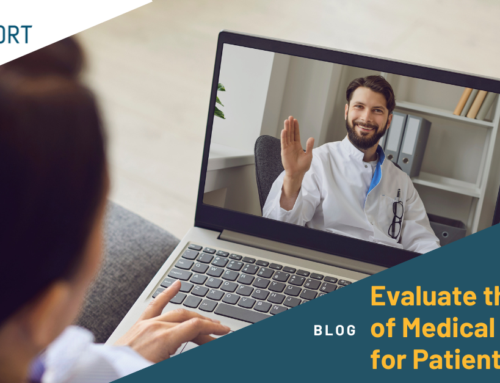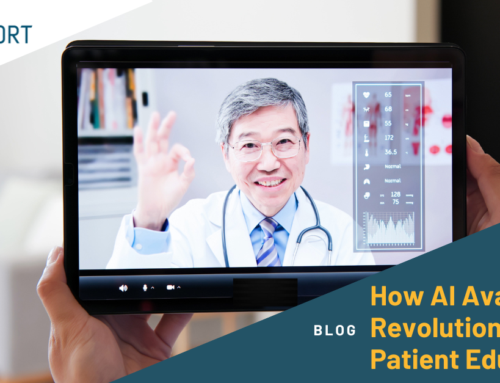5 Strategies to Improve Patient Comprehension: How to Evaluate Patient Understanding

Imagine this: a patient sits in your office, a folder of complex medical information resting on their lap. You have just diagnosed them with a chronic condition, and their mind is racing with questions and concerns. You explain the treatment, their options, risks and benefits.
Whether it’s patient education for breast cancer or another serious illness, the overwhelming emotions and medical jargon can create a fog in the patient’s mind. They nod along, but deep down, they’re lost, unsure of what’s really happening.
This scenario plays out in countless healthcare settings every day. Despite the best efforts of healthcare professionals, patients often leave appointments with only a vague understanding of their condition and what they need to do next. This lack of comprehension can lead to poor health outcomes, increased anxiety, and a diminished sense of control over their own care. Understanding how to evaluate patient understanding is crucial in such scenarios.
But what if there was a way to change all of this for the better? What if we could ensure that patients not only hear the information but truly understand it? Knowing how to evaluate patient understanding can make all the difference.
That’s where effective communication strategies come into play.
In this blog, we’ll explore five key strategies that can transform the way patients understand what’s going on with their health, leading to better outcomes and a more empowered patient experience. More importantly, we’ll show you how to evaluate patient understanding through each of these strategies.
Strategy #1: Simplifying Communication Through Plain Language Text
Medical terminology can be intimidating. Using plain language—words and phrases that are easy to understand—can make all the difference. Learning how to evaluate patient understanding becomes simpler when the language used is straightforward and accessible.
Why Plain Language Matters: When you strip away the complex medical terms, patients are more likely to comprehend and remember the information you provide. This means better adherence to treatment plans and fewer misunderstandings down the line. By simplifying communication, you enhance your ability to evaluate patient understanding effectively.
Tips for Simplification: Start by identifying common medical terms and finding simpler alternatives. For example, instead of saying “hypertension,” use “high blood pressure.” Additionally, breaking down instructions into clear, actionable steps can help patients follow through with their care, making it easier to evaluate their comprehension.
Strategy #2: Personalized Patient Education

No two patients are the same, and their education shouldn’t be either. How to evaluate patient understanding in this context involves recognizing the diverse ways patients learn. This means tailoring the information to meet each individual’s unique needs—taking into account their cultural background, language, and even their learning style. Knowing how to evaluate patient understanding in this context involves recognizing the diverse ways patients learn.
This could be particularly important for example, when it comes to patient education for breast cancer – where patients may have unique emotional and informational needs based on their diagnosis, treatment plan, and personal circumstances. Read about our pilot program at a large mid-Atlantic hospital system, where we 5thPort came in handy.
Tailored Learning: When education is personalized, it resonates more with patients, and makes them feel empowered. As a result, they’re more likely to engage with the material and, most importantly, retain the information. This leads to better compliance and improved health outcomes. Personalization also allows for more precise evaluation of patient understanding, as the education provided is directly aligned with the patient’s needs.
Effective Personalization: To personalize education effectively, start by gathering relevant patient information. This could include their preferred language, cultural considerations, and any specific concerns they may have. Then, tailor your educational materials to address these factors. This approach not only enhances learning but also provides clear indicators for evaluating patient understanding.
Strategy #3: Leveraging Multimedia and AI in Patient Education
We live in a digital age. Patients have diverse preferences when it comes to how they receive and process information. While some may favor traditional pamphlets, others are drawn to visual aids, videos, or interactive content. Offering a range of formats is key to evaluating patient understanding across different learning styles.
By offering a variety of educational formats, healthcare providers can cater to these different learning styles, making complex information easier to digest and increasing the likelihood that patients will truly comprehend and retain what they’ve learned.
For example, in patient education for breast cancer, videos can provide patients with a deeper understanding of their condition and treatment options. This variety of educational formats not only engages patients but also makes it easier to evaluate patient understanding across different learning styles.
The Power of Multimedia: Multimedia engages patients on multiple levels—visually, audibly, and interactively. This multi-sensory approach helps reinforce learning and makes information more memorable, which is crucial when you need to evaluate patient understanding. In a 2020 study of patients with cerebral aneurysms, patients receiving an educational intervention through multimedia reported significant improvements to their level of understanding (95.7%), that it was helpful (86.9%), and relevant (87%) to their clinic visit.
AI in Multimedia: Artificial Intelligence takes multimedia to the next level by creating adaptive and responsive content. AI can adjust the pace, complexity, and delivery of educational materials based on the patient’s feedback, ensuring the content meets their needs. With AI-driven content like Synthesia, healthcare providers can more accurately evaluate patient understanding and adjust educational strategies accordingly.
DID YOU KNOW...
Strategy #4: Generating Quizzes and Surveys
Quizzes and surveys serve as valuable tools in the process of active learning, allowing healthcare providers to assess and evaluate patient understanding and reinforce key concepts. In simple terms: by answering questions or providing feedback, patients reinforce what they’ve learned, making it more likely to stick.
Types of Quizzes/Surveys: Consider using a mix of question types—multiple-choice, true/false, and short answer—to assess different levels of understanding. Surveys can also be used to gather feedback on how well patients grasped the information provided. The results give you a direct way to evaluate patient understanding.
Currently, little information or studies exist surrounding the effectiveness of quizzes/surveys on improving health quality. A 2017 study by Winter is a base that is often used to build this framework, and 5thPort makes this a reality.
DID YOU KNOW...
Strategy #5: Implement Teach-Back Techniques
Teach-back is a simple yet powerful technique to confirm that patients understand the information you’ve provided. By asking them to “teach-back” what they’ve learned, you can identify gaps in their understanding and address them immediately. It’s a direct method for evaluating patient understanding.
Best Practices:
- When implementing teach-back, use open-ended questions like, “Can you tell me in your own words what we just discussed?” Avoid yes/no questions, as they don’t provide insight into the patient’s true understanding.
- Integrate teach-back into all your workflows at scale, by allowing patients to engage with teach-back from anywhere, and at any time.
DID YOU KNOW...
In Conclusion…
Improving patient comprehension is vital to delivering high-quality care and achieving better health outcomes. Especially in areas such as patient education for breast cancer, by simplifying communication, personalizing education, leveraging multimedia and AI, generating quizzes and surveys, and implementing teach-back techniques, healthcare professionals can make a significant impact. Knowing how to evaluate patient understanding throughout these strategies is key to their success.
Tools like 5thPort can help streamline these strategies, providing healthcare providers with the resources they need to educate patients effectively. By incorporating these strategies into your practice, you’ll not only enhance patient comprehension but also foster stronger, more informed patient relationships.
Reach out for a quick demo at info@5thPort.com or fill in the contact form, here.




